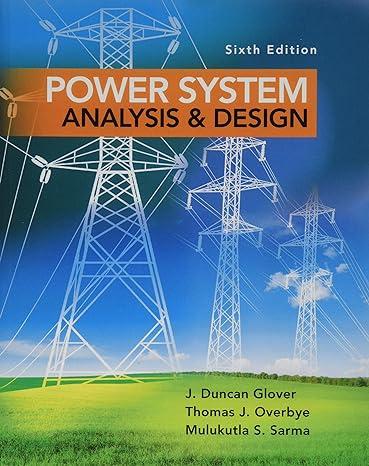One of the disadvantages of the IEEET1 exciter is following a fault the terminal voltage does not
Question:
One of the disadvantages of the IEEET1 exciter is following a fault the terminal voltage does not necessarily return to its prefault value. Using PowerWorld Simulator case Problem 12_3 determine the prefault bus 4 terminal voltage and field voltage. Then use the simulation to determine the final, postfault values for these fields for \(K_{a}=100,200,50\), and 10 . Referring to Figure 12.3, what is the relationship between the reference voltage, and the steady-state terminal voltage and the field voltage?
Figure 12.3

Problem 12_3
Open PowerWorld Simulator case Problem 12_3. This case models the system from Example 12.1 except with the rate feedback gain constant, \(\mathrm{K}_{\mathrm{f}}\), has been set to zero and the simulation end time was increased to 30 seconds. Without rate feedback the system voltage response will become unstable if the amplifier gain, \(\mathrm{K}_{\mathrm{a}}\), becomes too large. In the simulation this instability will be indicated by undamped oscillations in the terminal voltage (because of the limits on \(V_{r}\) the response does not grow to infinity but rather bounces between the limits). Using transient stability simulations, iteratively determine the approximate value of \(\mathrm{K}_{\mathrm{a}}\) at which the system becomes unstable. The value of \(\mathrm{K}_{\mathrm{a}}\) can be on the Generator Information Dialog, Stability, Exciters page.
Step by Step Answer:

Power System Analysis And Design
ISBN: 9781305632134
6th Edition
Authors: J. Duncan Glover, Thomas Overbye, Mulukutla S. Sarma





